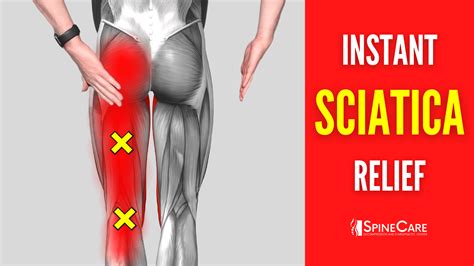How to Fix Sciatica: A Comprehensive Guide to Relief and Recovery
Sciatica, that sharp, shooting pain radiating down your leg, can be debilitating. But before you resign yourself to a life of discomfort, know that there are many effective ways to manage and even fix sciatica. This comprehensive guide explores various approaches, from simple home remedies to more advanced treatments, empowering you to take control of your sciatic pain.
Understanding Sciatica: The Root of the Problem
Sciatica isn't a disease itself; it's a symptom. It's caused by irritation or compression of the sciatic nerve, the longest nerve in your body, running from your lower back down through your hips and buttocks, and into your legs and feet. This compression can stem from various sources:
- Herniated Disc: A bulging or ruptured disc in your spine can press on the nerve.
- Spinal Stenosis: Narrowing of the spinal canal puts pressure on the nerve roots.
- Spondylolisthesis: This is when one vertebra slips forward over another, potentially compressing the nerve.
- Piriformis Syndrome: This involves the piriformis muscle, located in the buttock, compressing the sciatic nerve.
- Pregnancy: The added weight and hormonal changes during pregnancy can exacerbate sciatica.
Home Remedies for Sciatica Pain Relief
Before diving into more intensive treatments, explore these home remedies which can offer significant relief:
1. Gentle Exercise and Stretching
Light cardio: Activities like walking, swimming, or cycling can help improve blood flow and reduce inflammation. Avoid high-impact exercises that could aggravate the condition.
2. Stretching Exercises:
- Knee-to-chest stretch: Gently pull one knee towards your chest, holding for 30 seconds. Repeat on the other side.
- Pigeon pose (yoga): This pose can help stretch the piriformis muscle. Beginners should modify this pose to avoid overstretching.
- Cobra pose (yoga): This gentle backbend can help improve spinal flexibility. Listen to your body and stop if you feel any pain.
3. Applying Heat and Ice
Heat: Applying a heating pad or warm compress can help relax muscles and reduce pain. Ice: Ice packs can help reduce inflammation in the acute phase. Alternate between heat and ice, based on your comfort level.
4. Over-the-Counter Medications
Pain relievers: Nonsteroidal anti-inflammatory drugs (NSAIDs) like ibuprofen or naproxen can help manage pain and inflammation. Always follow the recommended dosage.
5. Maintaining Proper Posture
Ergonomics: Pay close attention to your posture at work and at home. Invest in an ergonomic chair and maintain good posture while sitting, standing, and sleeping.
When to Seek Professional Medical Help
While home remedies can provide relief, persistent or severe sciatica requires professional medical attention. Consult a doctor or physical therapist if:
- Your pain is intense and doesn't respond to home treatments.
- You experience weakness or numbness in your leg or foot.
- You have bowel or bladder problems.
- You have fever or unexplained weight loss.
Medical Treatments for Sciatica
Your doctor may recommend various treatments depending on the underlying cause and severity of your sciatica:
- Physical Therapy: A physical therapist can guide you through exercises and stretches to strengthen your core muscles and improve flexibility.
- Medication: Stronger pain relievers or muscle relaxants might be prescribed.
- Epidural Steroid Injections: These injections can help reduce inflammation around the sciatic nerve.
- Surgery: In rare cases, surgery may be necessary to correct underlying spinal issues.
Preventing Sciatica: A Proactive Approach
Preventing sciatica involves maintaining a healthy lifestyle:
- Maintain a healthy weight: Excess weight puts extra strain on your spine.
- Regular exercise: Strengthening your core muscles provides support for your spine.
- Good posture: Pay attention to your posture throughout the day.
- Ergonomic workplace: Set up your workspace to minimize strain on your back.
Disclaimer: This information is for educational purposes only and should not be considered medical advice. Always consult with a healthcare professional for diagnosis and treatment of sciatica.
